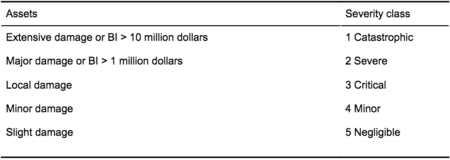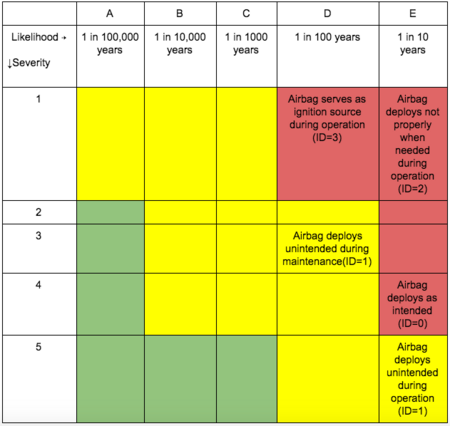Risk Quantification
From DTU ProjectLab
Contents |
Abstract
Human beings are familiar with the concept of risk or uncertainty since the beginning. The difference between risk and uncertainty is that the risk can be quantified. Poor risk assessment may lead to project failures or accidents, hence appropriate risk quantification is very important. However, to quantify the risk, once it has been identified, in order to remove or reduce it and take a decisive action is a big challenge. Risks are quantified by using likelihood or probability of an event to occur and its impact on the outcome or situation. Risks then can be categorized into acceptable or not acceptable risks and further actions are taken accordingly.
This article discusses the importance of risk quantification and reviews the methods that are used in risk quantification process. Risk quantification applies into every field of life from medical, projects, construction, to safety. Applications of risk quantifications are discussed and limitations or new challenges are analyzed briefly in this article.
Introduction
Definition and Concept
"Risk quantification is a process of evaluating the risks that have been identified and developing the data that will be needed for making decisions as to what should be done about them" [1]
The objective of risk quantification is to prioritize them in terms of their severity and likelihood, so that appropriate action can be taken accordingly. In order to quantify risk, it needs to be identified first. Once risk is identified then it is analyzed in terms of probability of occurrence and impact that it could print on the outcome. The probability is assigned based on the previous data of failure rates available for similar events or products in datasheets. Probability of Failure on Demand (PFD) of an event or a component is calculated by following formula.

Once probabilities of all events are calculated, a criterion for likelihood of all the events is defined. For example, if a specific event may occur in exceptional circumstances then its likelihood can be assigned as class “A” or “Unlikely”. Table 1 shows an example of likelihood classification of events.
In the similar way, severity of the events is also classified. For example, if an event may result in extensive damage or its impact may cost for more than 10 million dollars then this event can be classified as class “1” or “catastrophic”. An example of severity classification is given in Table 2.
The risk(R) is calculated by multiplying probability(P) with the impact(I) or severity.

Once risks are quantified then these are evaluated against a defined risk criteria or risk matrix. Red zone in a risk matrix may mean unacceptable risks, yellow zone may mean acceptable risk, and green zone may mean neglectable risks. For example, if an event has a likelihood of class “D” (Occasional) and it has the severity class “1” (Catastrophic) then it may lie in red zone of risk matrix. This may mean that appropriate or immediate actions should be applied to lower this risk into acceptable zone. Figure 1 shows an example of risk matrix of airbag deployment in air duct of coal mine.
Importance
The term risk or risk assessment may sound like a modern scientific concept, but the idea of risk is as old as recorded human history. The gambling, the very essence of risk, was a popular pastime that inspired Pascal and Fermat’s revolutionary breakthrough into laws of probability [1]. However, Risk as a scientific field is quite young. Around 30-40 years ago scientific journals, papers, and conferences started to cover this idea and principles on how to assess and manage risk [2].


